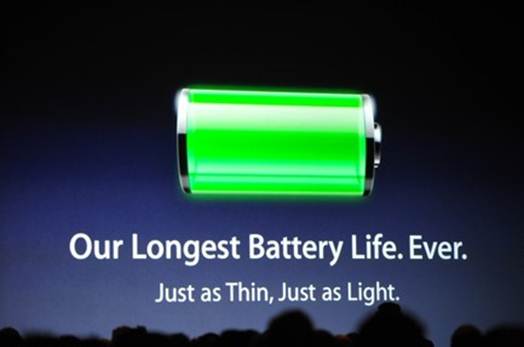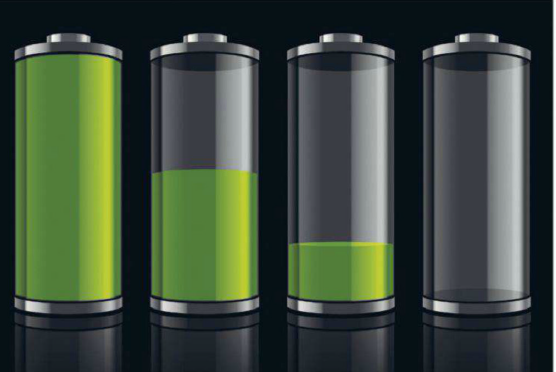Looking for all-day performance? We
explore how the batteries in mobile devices, and how to maximise capacity.
We're increasingly reliant on mobile
devices for computing, whether in the form of laptops, mobile phones or
tablets. To that extent, we're reliant on batteries to keep these devices
working while we're out and about, and to minimise the time we spend tethered
to the wall by a charging cable. On these pages, we'll look at how battery
capacity is measured, and what you can do to ensure your devices enjoy the
longest possible battery life.

What
you can do to ensure your devices enjoy the longest possible battery life
How powerful are modern batteries?
The rechargeable batteries you'll find in
laptops and mobile phones are sometimes rated in terms of watt- hours, A rating
of one watt-hour (lWh) means a battery can provide one watt of power for an
hour - or, if it's used in a more demanding device, two watts of power for half
an hour, and so on. A standard laptop battery might be rated at around 50Wh; a
tablet may have around half of that; smartphone batteries are often rated at
less than lOWh.
The watt-hour standard isn't universal:
you'll commonly see batteries rated in amp-hours (or, for greater precision,
milliamp-hours). Strictly speaking, this represents something different to
watt-hours - it's a measure of electrical charge rather than power consumption
- but for practical purposes you can think of it as merely an alternative way
of measuring a battery's capacity.

How
powerful are modern batteries?
All things being equal, more watt- hours or
milliamp-hours means longer battery life. If you replace a 4,000mAh laptop
battery with a high-capacity 6,000mAh one, you can expect it to last around 50%
longer. But if you're comparing two different laptops - or two different phones
- you can't necessarily assume the one with the higher battery rating will last
longest. Different screens and processors consume different amounts of power.
Even devices with apparently identical
technical specifications may gobble up juice at very different rates: for
example, one device might use firmware that throttles back the CPU to save
energy, while another runs the CPU at full power all the time. Factors such as
the brightness of a screen also make a difference. Even the design of the
casing can affect battery life: if a system becomes very hot, it may
automatically slow itself down to keep things cool, reducing power draw. If the
casing of a mobile phone affects its reception, the radio may need to draw more
power to hold on to a consistent signal.
For these reasons, battery ratings provide,
at best, a rough guide to how long a device will last away from the mains. The
only real way to find out how long a battery will last is to test it. Even
then, performance will vary depending on whether you're doing something
hardware-intensive - such as carrying out big calculations - or something
lighter, such as browsing the web or word-processing. This is why, when PC&TA
tests laptop batteries, we perform both light- use and heavy-use benchmarks, to
give upper and lower bounds for expected battery life.
Expected battery life
There's another reason why capacity ratings
can be misleading. Almost all consumer devices use lithium-ion (Li-ion)
batteries, as this technology offers comparatively high capacity in a compact
form. Some manufacturers describe their batteries as lithium- polymer: this is
simply a specific type of Li-ion design that's well suited to modern mobile
devices since it needs no metal casing, meaning batteries can be made very
light and thin.
Unfortunately, the capacity of any Li-ion
battery will inevitably degrade as you use it. A battery that's been used for a
few years will have a significantly smaller charge capacity than a brand-new
one.
How drastic is the drop off? There's no
simple answer to that. Research carried out at Ohio State University in 2010
suggests that if you habitually run a regular Li-ion battery down to zero
before recharging, its capacity could drop below 75% of its original level
after as few as 300 recharges.
Modern laptop manufacturers promise a
better lifespan, however: Apple and Samsung both advertise that the batteries
in their laptops will take up to 1000 full charge and discharge cycles before
falling to 80% of their original capacity.
At this point it's worth addressing the
persistent notion that fully discharging a battery before recharging prevents the
"memory effect" and prolongs its lifespan. This was perhaps true for
old nickel- cadmium rechargeable batteries (which are in fact now banned in the
EU, since cadmium is highly toxic), but with modern Li-ion technology it's
actually best to do precisely the opposite. Degradation is minimized if you
discharge the battery as little as possible before recharging.

Expected
battery life
Li-ion battery capacity can also be
affected by heat. By some estimates, a battery that's exposed to ambient heat
of 25°C for a year will lose 20% of its capacity, with higher temperatures
having an even more drastic effect.
Unfortunately, most laptops inevitably heat
up when they're in use (especially modern Ultrabook- style designs that have
little or no space for internal ventilation), so heat degradation is
unavoidable. But you can help prolong your battery's life by keeping it cool as
much as possible, and not storing it in a hot environment.
A last tip for prolonging the life of a
Li-ion battery is not to leave it empty, or with a very low charge, for a long
period. Lithium batteries lose between 5% and 10% of their capacity a month
when not in use, and if the charge drops below a certain level it will no
longer be possible to recharge it.
Note that this advice applies only to
Li-ion batteries. Nickel-metal hydride (NiMH) batteries - such as rechargeable
AAs - can be fully discharged without suffering any harm, and aren't so
sensitive to heat.